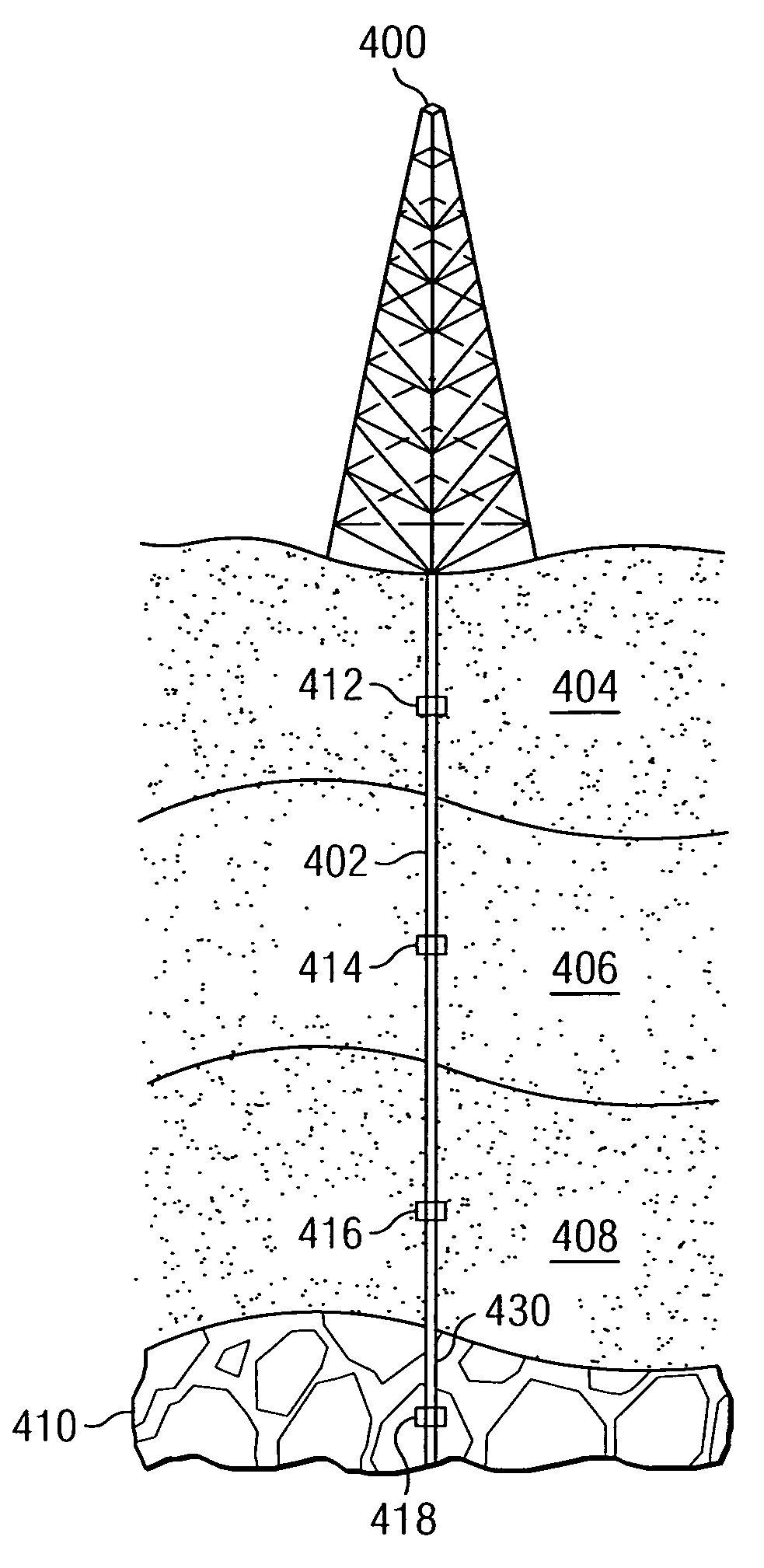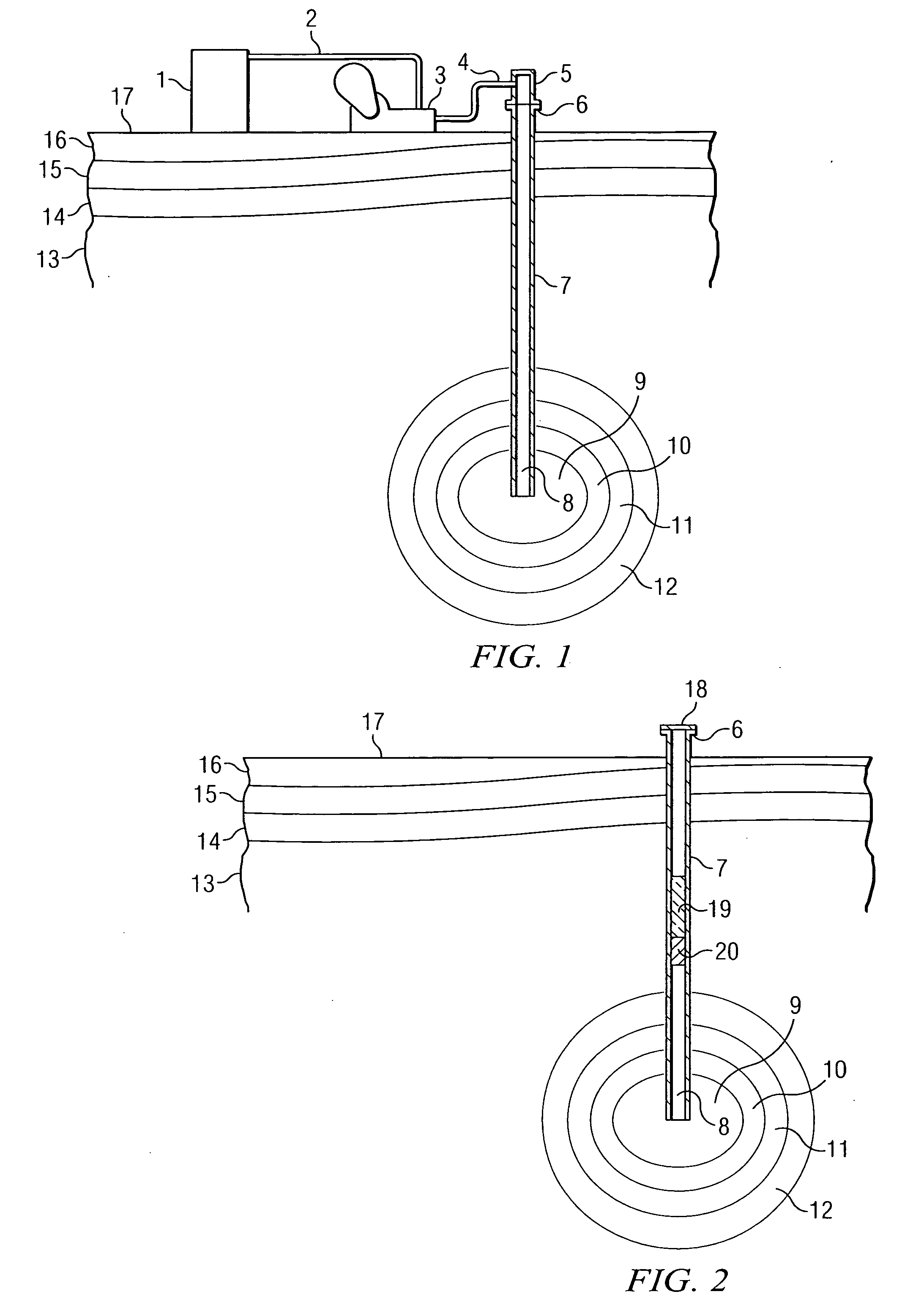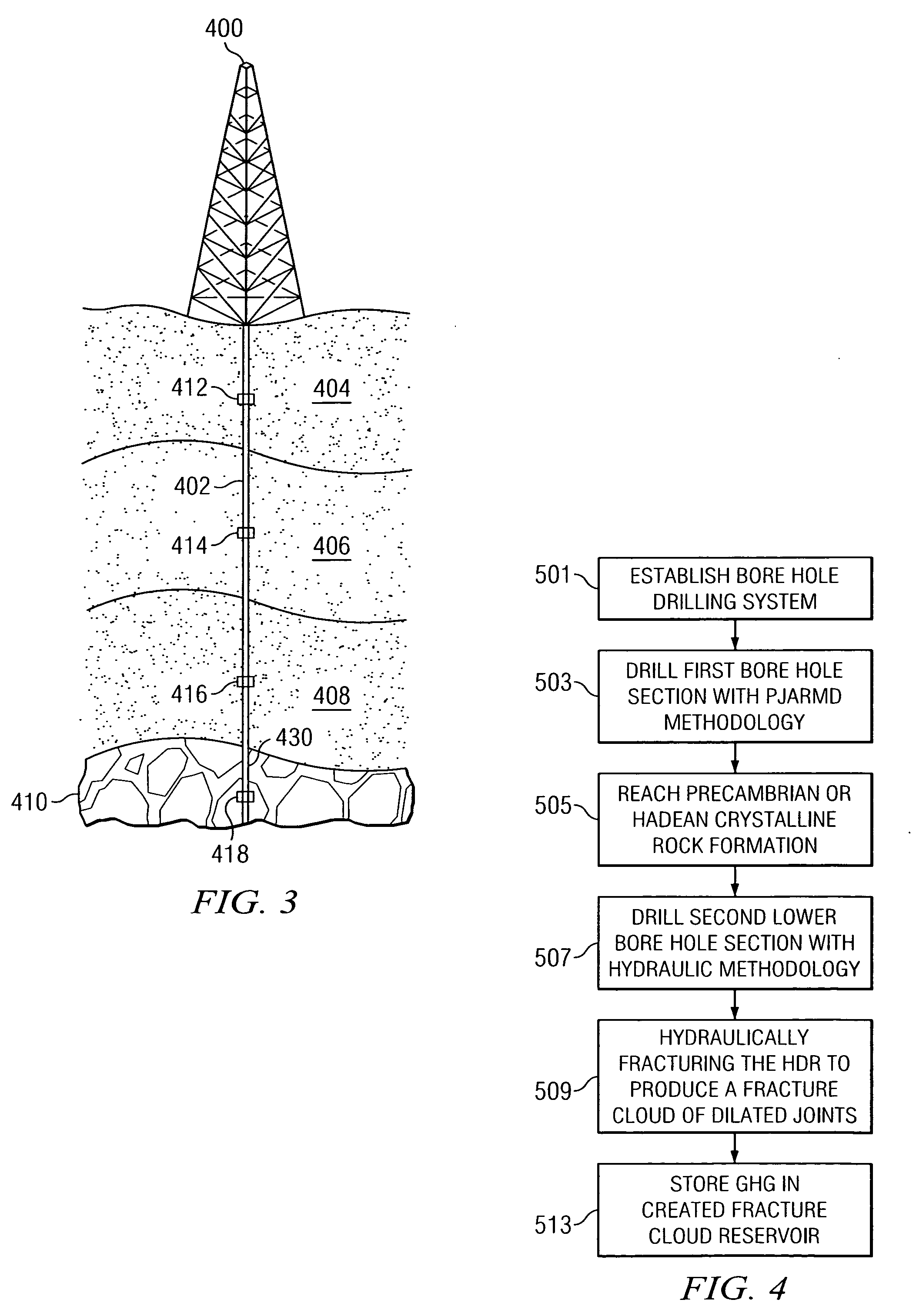Method of storage of sequestered greenhouse gasses in deep underground reservoirs
a technology of sequestered greenhouse gas and deep underground reservoir, which is applied in the directions of transportation and packaging, survey, borehole/well accessories, etc., can solve the problems of difficult prediction of their specific suitability for storage at best, uneconomical transportation of ghg to the storage site, etc., and achieve the effect of allowing low viscosity diffusivity
- Summary
- Abstract
- Description
- Claims
- Application Information
AI Technical Summary
Benefits of technology
Problems solved by technology
Method used
Image
Examples
cased well
[0045 bore 7 is located in close proximity to GHG capture means 1. Cased well bore 7 is drilled from the surface 17 utilizing Particle Jet Drilling means through sedimentary formations 16, 15 and 14 into Precambrian crystalline formation 13 to the shallowest depth necessary to achieve a combination of temperature and pressure sufficient to provide a transition from an unacceptable level of a brittle failure mode to an acceptable plastic failure mode generally believed to be a temperature of at least of 250° C. The well bore 7 is cased and a reservoir 9 formed through any means that would provide the porosity and permeability necessary for GHG storage. Such means to generate the artificial reservoir 9 could encompass but not be limited to the injection of a fluid to hydraulically dilate the existing joints within the formation such as is used in Hot Dry Rock reservoir generation methods to a high energy pulse stress fracturing forces generated from underground conventional or thermo-...
PUM
 Login to View More
Login to View More Abstract
Description
Claims
Application Information
 Login to View More
Login to View More - R&D
- Intellectual Property
- Life Sciences
- Materials
- Tech Scout
- Unparalleled Data Quality
- Higher Quality Content
- 60% Fewer Hallucinations
Browse by: Latest US Patents, China's latest patents, Technical Efficacy Thesaurus, Application Domain, Technology Topic, Popular Technical Reports.
© 2025 PatSnap. All rights reserved.Legal|Privacy policy|Modern Slavery Act Transparency Statement|Sitemap|About US| Contact US: help@patsnap.com



